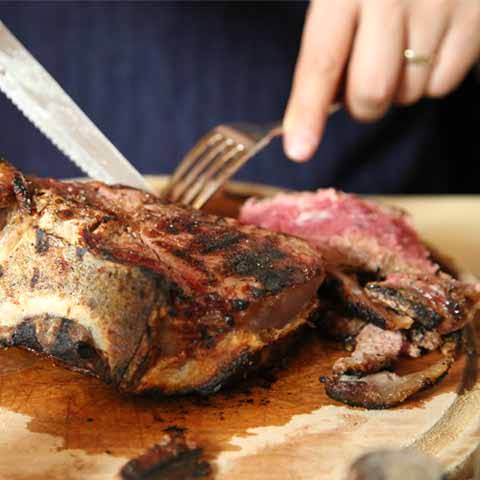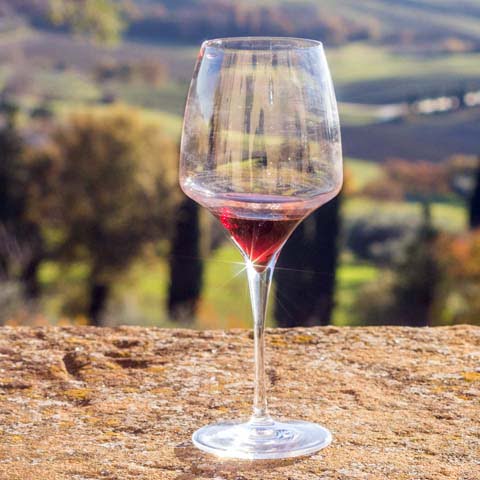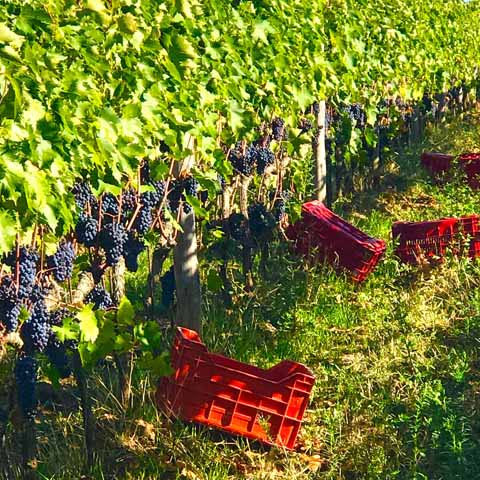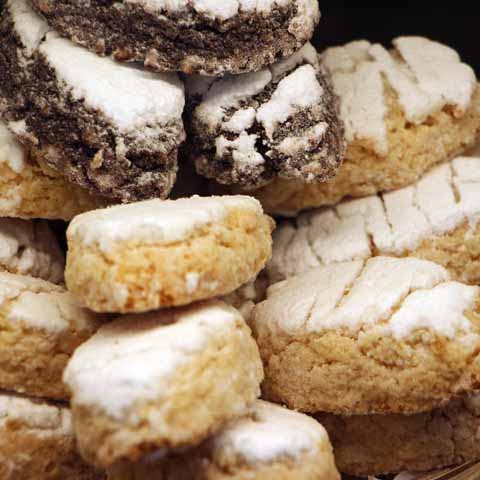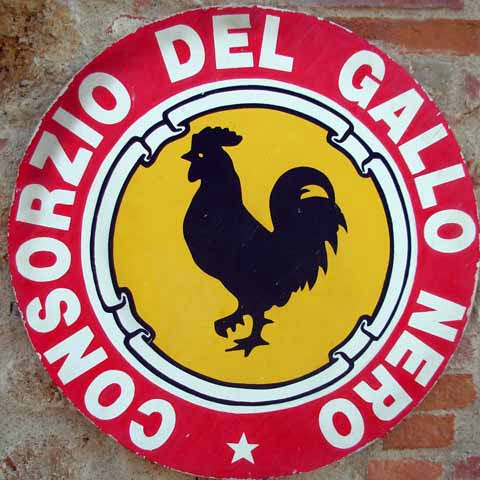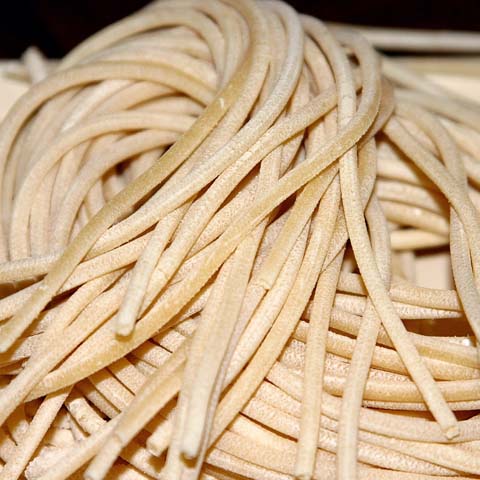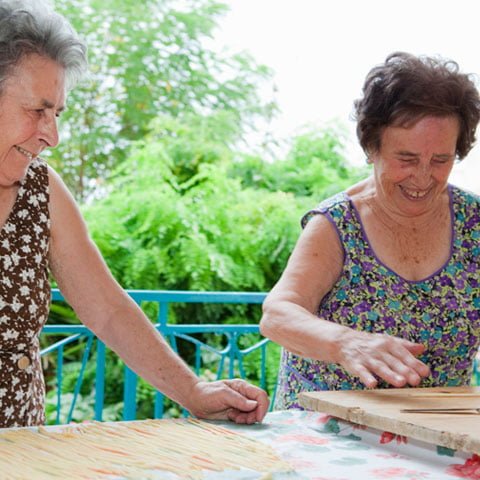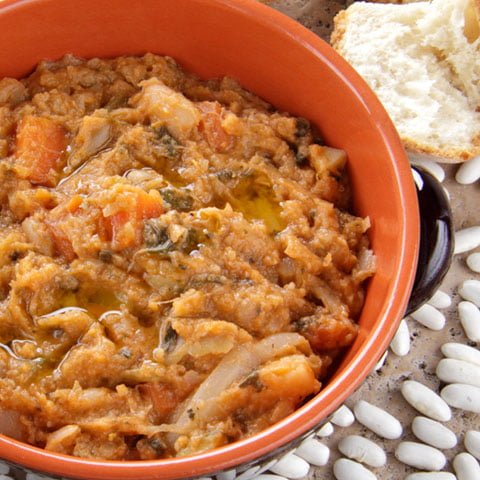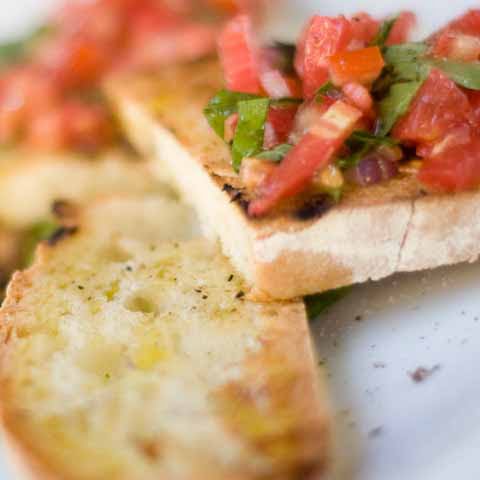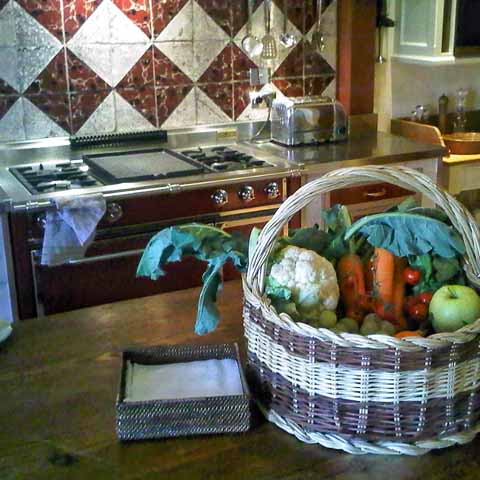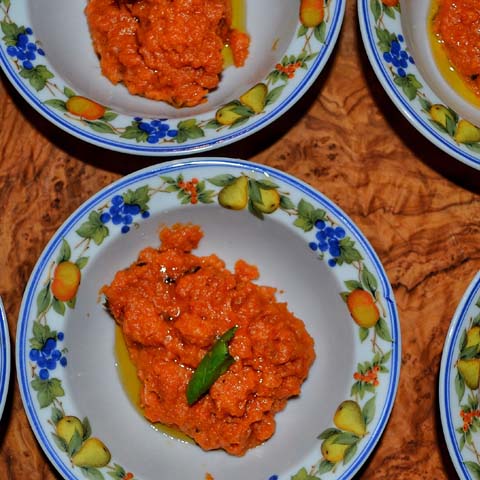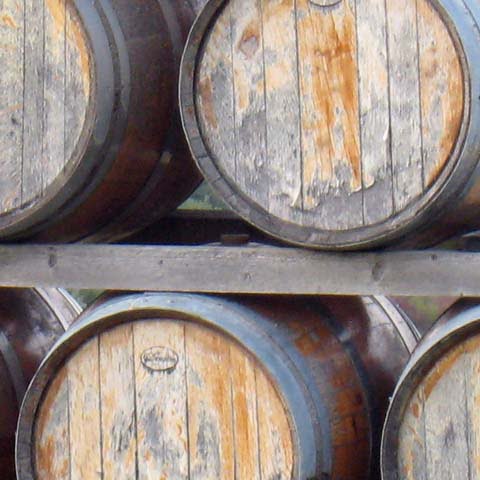Siena is one of the Tuscany region’s most gorgeous medieval cities whose cuisine only takes second place to the city’s picturesque make up. This popular Italy vacation destination is coveted by sightseers and foodies alike who are excited to see the best of both worlds collide in Siena.
This hilltop city on average enjoys fairly mild weather during the year, which lends itself to the fabulous vineyards, olive groves, and truffles found in the surrounding area. Siena is also known for incorporating game in its dishes, namely wild boar, as well as the fabulous wines made throughout the province of Siena, including Chianti. Almost any meal you enjoy in Siena will incorporate at least one of these amazing offerings.
Mealtime in Italy is a leisurely experience that is meant to be savored and enjoyed. Diners can expect meals to last close to two hours and to be filled with several courses of delicious food, happy laughter, and joy that comes from being in the company of newfound friends and family.
A trip to Siena without allowing time to enjoy the local cuisine is no trip at all. Plan for mealtime to be an important part of your itinerary and the overall Sienese experience.
APPETIZER
Appetizers in Siena are a key part of the city’s cuisine because they so closely embody the local culture. Even tried and true Italian appetizers take on new life when made with fresh vegetables and locally made meats and cheeses.
Like many other parts of Italy, local cured meats and cheeses frequently appear as appetizers in Tuscany. Typical cured meats made in Siena and the surrounding area include buristo, capocollo, soprassata (or soppressata Toscana), and finocchiona (all typically made from the local Cinta Senese breed of pig), while the most popular local cheeses include pecorino toscano, raviggiolo, and marzolino.
Crostini, grilled or toasted bread with a variety of toppings, are a popular appetizer throughout Tuscany. Crostini neri, featuring a pâté of chicken livers can be found throughout the region. In Siena, the typical recipe for crostini neri varies slightly with a pâté that consists mainly of veal spleen with a smaller percentage of chicken liver.
In addition to crostini neri, crostini bianchi can also be found in Siena and these are usually topped with cheese and white truffle shavings.
It is also worth noting that in Siena, like in much of Tuscany, the local bread is made without salt, giving it, and any dishes that feature it, a unique taste.
A similar dish beloved throughout Italy that is prominently featured on Tuscan menus is bruschetta (sometimes also called fettunta in Siena). This simple yet divine appetizer features slices of grilled or toasted bread rubbed with garlic and topped with fresh tomatoes, basil, and extra virgin olive oil.
Another light but delicious appetizer often requested by diners is pinzimonio, an assortment of fresh vegetables (usually fennel, celery, carrots, or peppers) that are served with a sauce composed of extra virgin olive oil, salt, pepper, and vinegar. This dish is simple yet fantastic.
While these offerings are wonderful, be sure to pace yourself as several courses still remain. You will want to leave room to try one of everything!
FIRST COURSE
First courses in Italy generally consist of a number of pasta offerings, and Siena is no different. However, although handmade pasta is the norm throughout Italy, there are some local versions that feature a unique and interesting twist.
Though some might erroneously call it spaghetti, Siena is known for its pici, rather thick, long pasta that is thought to have originated in the BC era. This type of pasta is made with water, flour, and salt following an in-depth process of stretching the dough by hand to attain the proper shape. In the past, pici dough was made without eggs, yet today some modern recipes have added eggs. There are a variety of traditional sauces served with pici such as sugo all’aglione (a tomato sauce with a local type of garlic called aglione), sauteed breadcrumbs, and various types of ragù featuring wild boar or hare.
Fagioli all’uccelletto is commonly seen on Tuscan menus. This dish is one that’s secret is to be slow cooked for just the right flavor. This hearty dish is savory and flavorful with ingredients such as beans, sausage, garlic, sage, olive oil, tomatoes, and salt and pepper. Fagioli all’uccelletto is perfect for warming up from the inside out on a cold day. Additionally, it should be noted that in other parts of Tuscany the dish is vegetarian and the sausage is omitted.
Pasta e fagioli is another robust dish that consists of pasta, beans, tomatoes, fresh spices, olive oil, and salt and pepper. Although it is not as heavy as fagioli all’uccelletto, it is quite filling.
Siena also has its own version of ribollita, a soup that is common throughout Tuscany, though in Siena it is usually called zuppa di fagioli. This is a hearty soup consisting of vegetables and beans that is served on slices of bread rubbed with garlic. The name ribollita, which translates to “reboiled,” refers to the fact that each time the soup is heated up the flavors become more concentrated and therefore more delicious. The main ingredient tends to be locally grown black cabbage and truly this soup is a great example of Siena’s simple yet delicious cuisine.
Another simple soup served in many parts of Tuscany, including Siena, is called panzanella. Typically made with stale bread, tomatoes, celery, basil, and onion, this soup is served cold.
SECOND COURSE
The most frequently served second courses in Siena are meat based. Whether it is a Chianina steak that is cooked to perfection over an open grill or Cinta Senese pork that has been lovingly flavored and roasted, once you have tasted them it is not hard to see why Siena second courses like these are local favorites. Cinta Senese pork is thought to have been around since the Etruscans and it is an important part of the cuisine in Siena. These prized pigs are raised in semi-wild conditions where they spend the days roaming and grazing on small shrubs, olives and locally grown grains, and rooting for acorns and hazelnuts. The natural and mixed diet of the Cinta Senese results in leaner and more savory meat that is prized and treasured by locals and visitors alike.
The traditional way to prepare pork in this part of Tuscany (called arista) is to slowly roast it and serve it sliced with a sauce made from sage, rosemary, and garlic.
One common presentation for steak is called tagliata, which features slices of medium rare or rare Chianina steak served over a bed of arugula, topped with large flakes of cheese (usually Grana Padano or Parmigiano-Reggiano).
Roasted meats, known as arrosti misti, are a common second course throughout Siena and the surrounding province. They typically include a variety of meats such as sausage and other types of pork, veal, and beef.
Wild game features prominently on Siena’s menus with wild boar, hare, and pheasant being the local favorites. These meats can be grilled or served in stews.
Another beloved dish among locals is scottiglia, a thick stew made by quickly searing a variety of meats including beef, chicken, lamb and rabbit, then cooking them with tomatoes (or tomato sauce) and broth. Scottiglia can be served as is or placed on top of slices of toasted bread.
Though meat is quite prominent in Sienese cuisine, there are also a few second courses that do not feature meat. One example would be gnudi (naked), which are balls of ricotta, spinach, and Parmigiano-Reggiano. These are typically served with a butter and sage sauce or with ragù. Their peculiar name derives from the fact that they are made with the same ingredients as ravioli filling, except no pasta surrounds them, so they are “naked.”
Finally, we have ciancinfricola, which is difficult to say, but absolutely a must-try when in Siena. The dish consists of whisked eggs that are cooked with olive oil, garlic, and tomatoes. Like other dishes from Siena, ciancinfricola can be served on its own or with toasted bread. This rustic dish was once a staple among farmers in the countryside surrounding Siena.
STREET FOOD
In Italian cities it is not uncommon for locals and visitors wandering the city streets to partake in a snack or a meal as they walk, which is why street food is an important offering in Siena. Perhaps the most famous street food offering in the city is ciaccino, which is a type of flatbread. This delicious flatbread is soft and tender inside, while crisp and perfectly golden on the outside. The bread is typically stuffed with cured Cinta Senese pork products such as capocollo, salame or prosciutto and locally made cheeses such as pecorino Toscano. This street food is cooked in woodfired ovens and features either extra virgin olive oil or lard giving it a beautiful finish.
Speaking of street food in Siena, be sure to try a panino. This Italian sandwich is served a variety of ways and can feature locally cured meats, delicious types of cheeses and may or may not include fresh vegetables. This delicious sandwich is lightly grilled and served warm.
The sightseeing in Siena is outstanding but it can be even more fabulous when indulging in the street food offerings with friends and family!
DESSERT
Any course from a Siena menu is enough to make a diner swoon, but perhaps nothing is quite as swoon worthy as the last course of dessert. Delicate and indulgent pastries and tall, elaborate cakes can be seen in display windows of local cafes and restaurants. Particularly since most visitors will be spending the day walking the city to sightsee, a pastry or two or three would be worth the calorie splurge.
A beloved dessert of locals is the panforte. The dessert’s name translates to “Strong bread.” This very dense and nutty cake is somewhat reminiscent of an American fruitcake and is estimated to have been part of the Siena culture since at least the early nineteenth century. This delicious treat is tightly packed with a variety of dried fruit, honey, spices, and nuts, and is usually topped off with a thin layer of powdered sugar for an added touch of sweetness. Panforte is traditionally associated with Christmas, though in Siena it is considered a local specialty and can be enjoyed all year round.
If you are looking to nosh on lighter fare, consider ordering up ricciarelli. These adorable cookies made in Siena are soft, crinkled looking almond cookies covered in powdered sugar. Be forewarned that it is hard to stop at just one of these cookies because they are so light and delicious.
Last, but certainly not least, is Tuscany’s most famous cookie, cantuccini (also called cantucci). Referred to as biscotti in other parts of the world, cantuccini are baked twice: first as a long strip of dough, and then the dough is cut into slices (giving the cantuccini their iconic shape) before being baked a second time. The cookies are usually flavored with whole almonds, citrus, and spices (such as anise). In Siena, these cookies can be referred to as tozzetti, and typically hazelnuts are used instead of almonds. Because of their dry texture, they are usually served with a drink, such as coffee, tea, or wine (Vin Santo) with most locals dipping their cantuccini into the drink.
WINE
A meal in Siena just isn’t complete without being accompanied by a glass of fine locally produced wine. As the Italian saying goes, “Un pranzo senza vino è come un giorno senza sole,” which translates to English as, “A lunch without wine is like a day without sunshine.”
The Tuscany region is known worldwide for its amazing countryside which is filled with gorgeous vineyards and amazing wine offerings, and in Siena, Chianti is one of the most popular. Chianti Classico and Chianti Superiore are two such examples of fine wine from the Chianti area positioned between Siena and Florence. Today it is estimated that more Chianti is produced than any other wine. However, there are many other noteworthy wines produced in the province of Siena. Vino Nobile di Montepulciano is one such wine, which is a delicious red made primarily from Sangiovese grapes and has a prestigious DOC status. Brunello di Montalcino is a dry red wine that is also made from Sangiovese grapes, but features the highly regarded DOCG recognition. Those that prefer white wine should try Vernaccia di San Gimignano. This is the region’s only white wine that has reached the prominent DOCG status thus far.
Another important wine to mention is Vin Santo, which is a delicious dessert wine featuring notes of caramel and hazelnut. Try this delicious wine when in Siena, and be sure to have some cantuccini available for dunking.
Make plans to visit Siena, Italy and let the city’s fresh and homemade cuisine and stellar sightseeing transport you to a different time characterized by immense beauty and leisure.
Don't just see Italy, live it.
Your dream trip to Italy has never been closer
No more endlessly scrolling travel sites. Our travel experts will craft the perfect, one-of-a-kind trip just for you.

300+
DESTINATIONS
We offer more Italian destinations than any travel site. Do and see more with Trips 2 Italy.
1 (of a kind)
ITINERARIES
Because your dream trip to Italy should be designed for you, not for the masses.
100%
PEACE OF MIND
From flights and accommodations, to food and activities - we take care of every detail.
